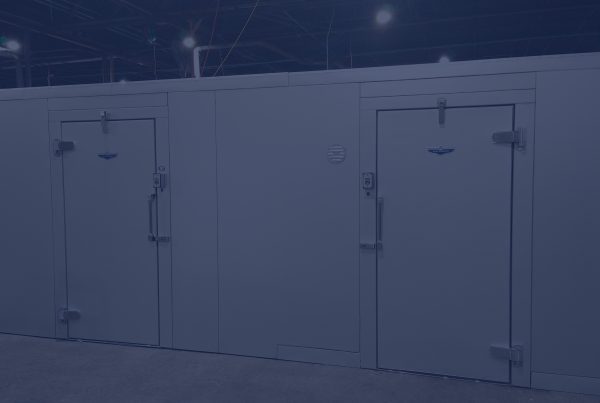 Be aware when shopping for walk-ins online that you are comparing the same size box and refrigeration. Some companies are offering smaller sized refrigeration packages, which make it look cheaper upfront but may not provide you the results you are looking for.
Be aware when shopping for walk-ins online that you are comparing the same size box and refrigeration. Some companies are offering smaller sized refrigeration packages, which make it look cheaper upfront but may not provide you the results you are looking for.
Some systems, whether they are coolers or freezers, are designed only to hold the temperature of the product coming in and are not designed to pull-down the temperature of the product to the desired holding temperature. Pull-down happens when there is product entering the cooler or freezer that is warmer than the desired temperature and needs to cool in a short amount of time. For example, when a restaurant owner has a large pot of soup that needs to be cooled quickly to avoid bacteria growth, the refrigeration must be able to cool the soup to the desired temperature in a reasonable and safe time while maintaining the holding temperature in the cooler/freezer. Systems designed for holding only and not to pull down the temperature of the product coming in will only work properly if products entering the box are already at the desired temperature, either cold or already frozen.
The industry standard design temperature for freezers is at -10° F. Some online companies are selling their freezer refrigeration at a holding temperature of 0° F. If you try to run a walk-in designed for 0° F holding temperature and set the thermostat to -10° F, it will run constantly trying to meet the -10° F temperature it was not designed to hold. This will shorten the life of the compressor and may cause the coil to freeze and consequently warm up the box to melting temperature, damaging the food stored inside.
Before purchasing, you must understand the difference and what implications it could have on your business. Most perishable items that are stored in a freezer are not frozen to start with and will need to freeze and stay frozen for a period of time. If the box is designed for holding temperature only and is set at 0° F, the refrigeration will work harder and longer to pull the temperature inside the box back down to 0° F once warm food is stored in the freezer. Frozen products, such as ice cream, hold up better at -10° F rather than 0° F. When a freezer goes into defrost it can raise the box temperature by 10-15°. If your box is set at 0° F, a 10-15° temperature swing can cause some products to be damaged or melted. When dealing with food it is imperative to make sure the holding temperature in the freezer is low enough to keep products frozen, protecting from bacteria or other hazards that spread through food not refrigerated correctly. (Check with your local health codes for the required holding temperature of your walk-in cooler and freezer.) It is also important to note that when refrigeration is working longer and harder, your energy costs will increase as well as the chances of your refrigeration breaking down or having inefficiencies.
Every state has requirements for storing cold food; here is an example of Illinois’s Administrative Code.



